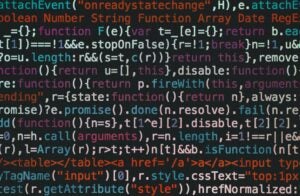
June 2 - June 29, 2025
$95.00
Hands-On Mapmaking for Journalism / 2025 Edition
Turn your data into compelling visual stories—no coding needed!
Join the Knight Center’s four-week online advanced course, “Hands-On Mapmaking for Journalism / 2025 Edition,” and learn how to create interactive, customizable maps using free, open-source tools like Protomaps.
You’ll develop practical skills to prepare and visualize geographic data, publish maps your audience can explore, and avoid common pitfalls—all while retaining full control of your work.
Perfect for journalists, researchers, and media professionals, this course requires only basic spreadsheet knowledge and a curiosity for storytelling with maps.
By the end, you’ll know how to:
-
Spot stories that benefit from data maps
-
Find and clean geographic data using free tools
-
Build and host interactive maps—no third-party platforms required
-
Make ethical, accurate, and engaging visuals that enhance your reporting
This course is asynchronous, meaning there are no required live events, and you can complete activities at your own pace throughout each week.
The material is organized into five modules covering various topics through videos, readings, and discussion forums:
Introduction Module: Getting set up with the class data, and a guide to finding your own.
We’ll begin with a look at how powerful maps can be in journalism—through iconic examples and projects by your instructor, John Keefe. Then we’ll get you set up with the tools and data you’ll need, and guide you in choosing a dataset of your own to work with throughout the course.
Module 1: Making data maps with Datawrapper
Start creating vibrant, story-ready maps using Datawrapper, a free, easy-to-use tool. You’ll learn how to prep your data, match values to geographic areas, and build polished choropleth maps to embed in your stories. This week lays the groundwork for all your mapping projects.
Module 2: A deeper dive into mapping principles
Dig deeper into the principles of mapping and geographic data. Learn how to recognize different file types, use free tools to explore and convert them, and understand how tile-based maps work. We’ll also discuss mapping ethics and privacy—key issues when working with location-based data.
Module 3: Making interactive maps with Protomaps
Create interactive, zoomable maps with Protomaps, a revolutionary open-source tool. You’ll learn how to make and style your own map tiles using your data, and how to make your maps responsive and user-friendly on both mobile and desktop.
Module 4: Hosting your Protomaps files
Finally, we’ll show you how to publish your maps online. Learn low-cost options for hosting your map files, from using your organization’s own servers to setting up with AWS or Protomaps’ free nonprofit hosting. We’ll cover tips for getting your maps into your CMS and in front of your audience.
Register now for free and gain immediate access to the introduction module materials.
If you have any questions, please contact us at journalismcourses@austin.utexas.edu.
 John Keefe is the Weather Data Editor at the New York Times. He previously made graphics at the Times about the 2020 election and contributed to coverage of the Covid-19 pandemic, for which the paper won the 2021 Pulitzer Prize for Public Service. He has been a senior data and visuals editor for breaking news and climate coverage at CNN and worked at Quartz, where he was the investigations editor and also led the Quartz AI Studio. Keefe established the Data News Team at public radio station WNYC, leading a team of journalists who specialized in data reporting, coding, and design. He ran WNYC’s news division for nearly a decade. A self-described “professional beginner,” Keefe runs a tinkering and teaching company called Really Good Smarts LLC. He has taught classes about online investigations, data journalism, machine learning, and journalism products at the Craig Newmark Graduate School of Journalism at CUNY. Keefe also has led classes and workshops at Columbia University, Stanford University, the New School University, New York University, the Knight Center for Journalism in the Americas, and was an Innovator in Residence at West Virginia University’s Reed College of Media.
John Keefe is the Weather Data Editor at the New York Times. He previously made graphics at the Times about the 2020 election and contributed to coverage of the Covid-19 pandemic, for which the paper won the 2021 Pulitzer Prize for Public Service. He has been a senior data and visuals editor for breaking news and climate coverage at CNN and worked at Quartz, where he was the investigations editor and also led the Quartz AI Studio. Keefe established the Data News Team at public radio station WNYC, leading a team of journalists who specialized in data reporting, coding, and design. He ran WNYC’s news division for nearly a decade. A self-described “professional beginner,” Keefe runs a tinkering and teaching company called Really Good Smarts LLC. He has taught classes about online investigations, data journalism, machine learning, and journalism products at the Craig Newmark Graduate School of Journalism at CUNY. Keefe also has led classes and workshops at Columbia University, Stanford University, the New School University, New York University, the Knight Center for Journalism in the Americas, and was an Innovator in Residence at West Virginia University’s Reed College of Media.
You will need a computer with an internet connection and a web browser. The computer should be a laptop or desktop running one of the popular browsers such as Chrome, Firefox or Safari. Mobile devices such as phones and tablets are not recommended, as it may be difficult to complete the hands-on portions of the class. We won’t have the resources to troubleshoot problems on these devices.
We will use the free features of these commercial services, and if you don’t already have an account with each service you should sign up before the class begins:
- Datawrapper, a charting and mapping tool. You can create an account or use your Github, Google, Microsoft, or Twitter accounts.
- Github, a site for storing and running code. It’s where you’ll keep your own copy of the class materials and work on your own “computer in the cloud.”
- Amazon Web Services. This is where we’ll put our maps so the public can view them.
We will also use these completely free, open-source tools (there is no need to sign up for these):
- Protomaps, which allows us to build self-hosted “slippy” maps without subscribing to tile-based services such as Google Maps or Mapbox.
- Mapshaper, a free, powerful tool made by Matthew Bloch of the New York Times.
- Tippecanoe, a map tile-maker originally built by Mapbox and now actively maintained by Erica Fischer at Felt.

Knight Center for Journalism in the Americas
300 West Dean Keeton
Room 3.212
Austin, TX, 78712
Phone: 512-471-1391
Email: journalismcourses@austin.utexas.edu



